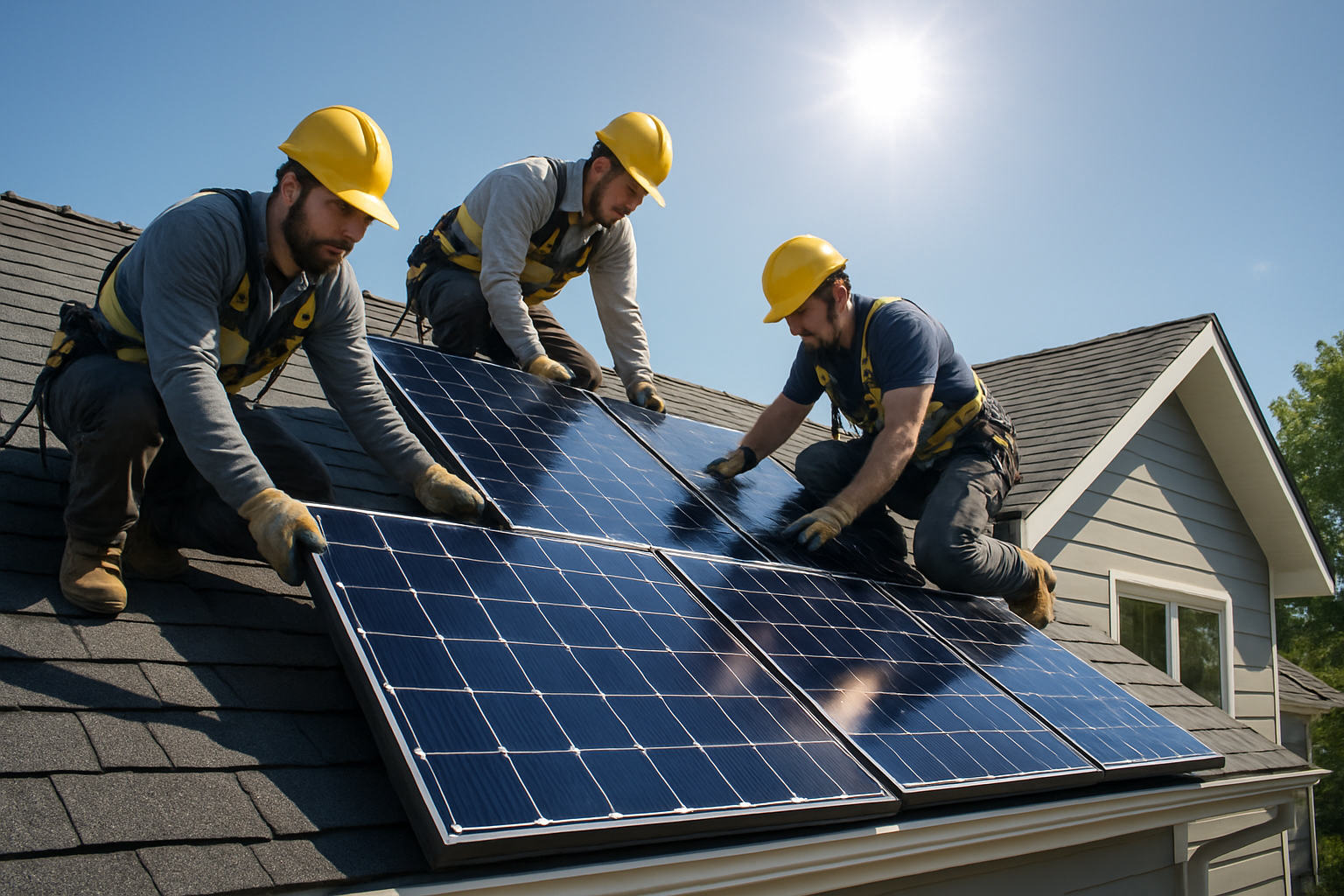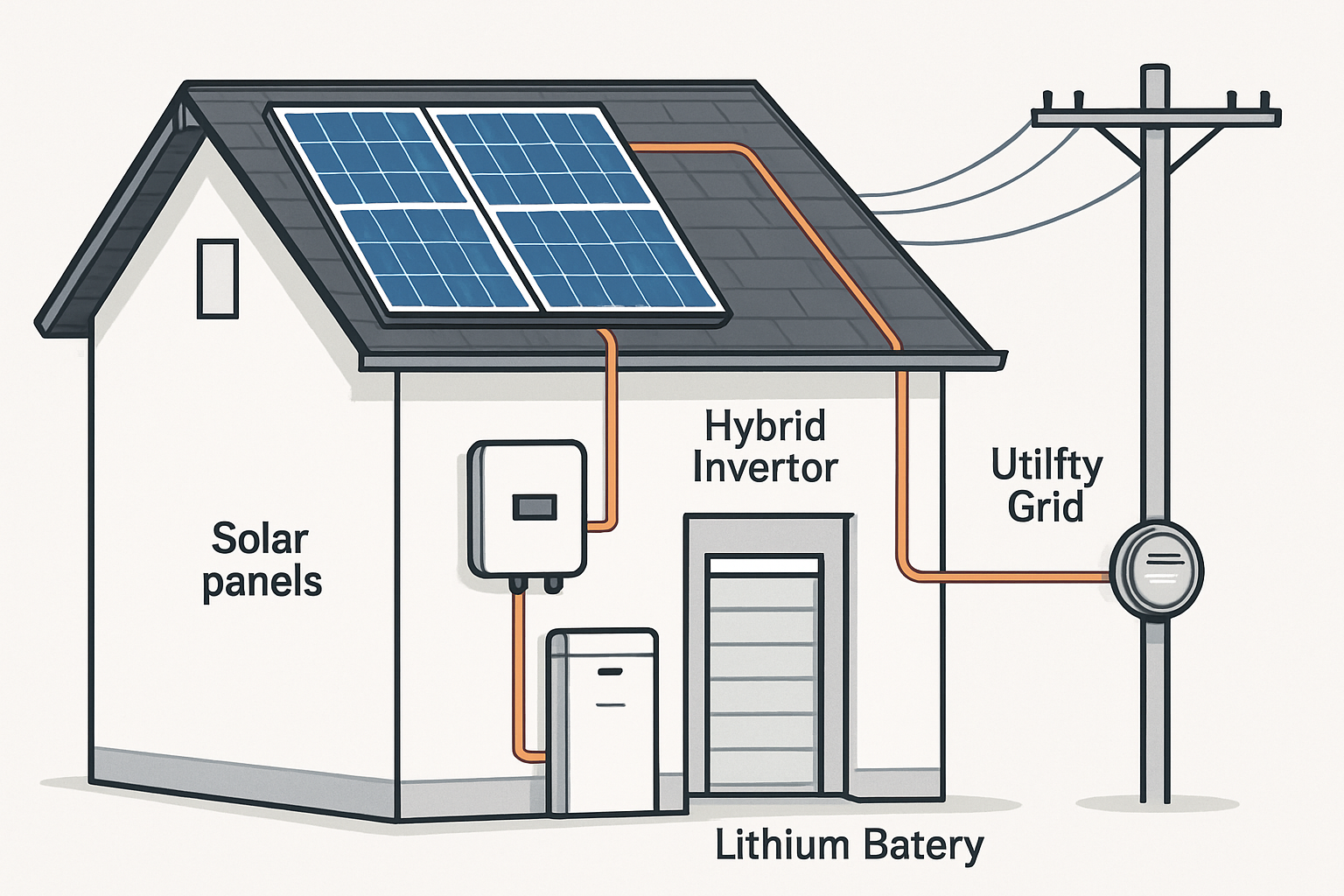Transitioning to solar power is an exciting step toward energy independence and lower utility bills. A successful solar energy system, however, depends entirely on a correct installation. Errors made during this critical phase can compromise performance, create safety hazards, and lead to expensive repairs. Understanding common pitfalls from the start protects your investment and ensures you get the most out of your system for decades.
This overview answers frequent questions by highlighting 12 common installation mistakes, from initial planning to final checks. Arming yourself with this knowledge helps you navigate the process with confidence.
Foundational Planning Errors
The most critical mistakes often happen before a single panel is unboxed. Thorough preparation lays the groundwork for a high-performing and reliable solar energy system.
1. Miscalculating Your Energy Needs
A primary error is improperly sizing the system. To do this correctly, you must analyze at least 12 months of your electricity bills to understand your average consumption and peak usage times. An undersized system will not meet your energy goals, leading to disappointment. An oversized system means you have paid for generating capacity you do not need, extending the payback period of your investment.
2. Ignoring Your Roof's Condition and Orientation
Your roof is the foundation of your solar array. Before installation, it needs a thorough inspection for age, structural integrity, and remaining lifespan. Installing panels on an old roof means you will have to pay to remove and reinstall them when the roof needs replacement. Additionally, panel placement is crucial for production. In the Northern Hemisphere, a south-facing roof is typically ideal. As noted in the IEA's Next Generation Wind and Solar Power report, both the orientation and tilt angle of your panels significantly influence their energy output throughout the day and across seasons.
3. Overlooking Local Permits and Regulations
Every municipality has its own rules for solar installations, covering everything from electrical wiring to structural mounting. Failing to secure the proper permits can result in fines, legal trouble, or even an order to dismantle your system. Permitting can be complex, sometimes involving factors you might not expect. For instance, as highlighted by a U.S. Department of Energy Success Story—Improving Solar Permitting by Addressing Questions about Stormwater Runoff, communities even need specific tools to assess how solar arrays affect water flow, demonstrating the detail involved in local compliance.

Equipment Selection and Siting Pitfalls
Choosing the right components and placing them correctly are just as important as the initial planning. Mismatched equipment or poor placement can severely limit your system's output.
4. Choosing Incompatible Components
A solar energy system is more than just panels. It includes inverters, racking, and potentially an energy storage system. All these components must be compatible. Using a mismatched inverter and battery, for example, can lead to poor performance, system faults, or even damage the equipment. A well-integrated system functions seamlessly to deliver reliable power.
5. Underestimating the Impact of Shading
Even small amounts of shade can have a big impact on energy production. A shadow from a nearby tree, a chimney, or a satellite dish falling across a single panel can reduce the output of the entire string of panels in some systems. A proper site assessment involves mapping the sun's path throughout the year to identify any potential shading issues and position panels for maximum sun exposure.
6. Neglecting Proper Ventilation for Equipment
Inverters and batteries generate heat while operating. If they are installed in a confined space without adequate airflow, they can overheat. Overheating reduces their efficiency and significantly shortens their operational lifespan. Proper installation includes ensuring sufficient clearance around this equipment as specified by the manufacturer to allow for natural cooling.
Critical Installation and Wiring Oversights
The physical installation demands precision. Cutting corners here introduces safety risks and performance problems that can be difficult to diagnose later.
7. Incorrect Panel Mounting and Securing
Solar panels must be securely fastened to withstand all weather conditions, including high winds and heavy snow. Improperly mounted panels can lift off the roof, causing extensive damage to your property and the system itself. The mounting system must also be correctly sealed to prevent roof leaks, which can lead to costly water damage over time.
8. Faulty Wiring and Connections
Poor electrical work is one of the most dangerous installation mistakes. Using the wrong size wire, or leaving loose connections, creates electrical resistance. This resistance generates heat, which reduces system efficiency and presents a serious fire hazard. All electrical connections must be tight, secure, and protected from the elements.
9. Improper System Grounding
Grounding is a non-negotiable safety feature. It provides a safe path for electrical current to flow to the earth in the event of a fault, like a short circuit or a lightning strike. An improperly grounded system can damage your equipment and poses a severe risk of electric shock to anyone who comes into contact with the system's components.
Post-Installation Gaps
The job is not finished once the last panel is in place. Verifying performance and establishing a routine are essential for long-term success.
10. Skipping the Final Commissioning and Inspection
Commissioning is the process of verifying that the system is installed correctly and operating as designed. This involves testing voltages, checking inverter settings, and confirming all components are communicating properly. Skipping this step means you might not know if your system is underperforming or if a safety issue exists until it is too late.
11. Not Setting Up a Monitoring System
Modern solar systems come with monitoring software that tracks energy production in real time. Not setting this up is a missed opportunity. Monitoring allows you to see how much power your system is generating, identify performance drops quickly, and ensure you are getting the expected return on your investment. The U.S. Department of Energy's Solar Futures Study projects massive growth in solar deployment, making data and monitoring increasingly vital for grid stability and user benefit.
12. Lacking a Basic Maintenance Plan
While solar panels are durable and require little upkeep, they are not completely maintenance-free. Panels can get dirty from dust, pollen, or bird droppings, which can reduce their efficiency. A simple plan for periodic cleaning and visual inspections of wiring and components will keep your system running at peak performance for years to come.
Your Path to a Flawless Solar Setup
Avoiding these 12 common mistakes is fundamental to a successful solar installation. By focusing on detailed planning, selecting compatible equipment, and ensuring a high-quality installation, you set your system up for long-term success. A properly installed and maintained solar energy system is a reliable asset that provides clean power and helps you achieve your energy independence goals.





Leave a comment
All comments are moderated before being published.
This site is protected by hCaptcha and the hCaptcha Privacy Policy and Terms of Service apply.